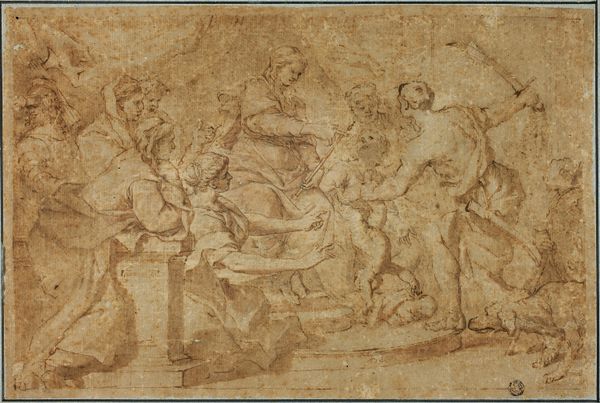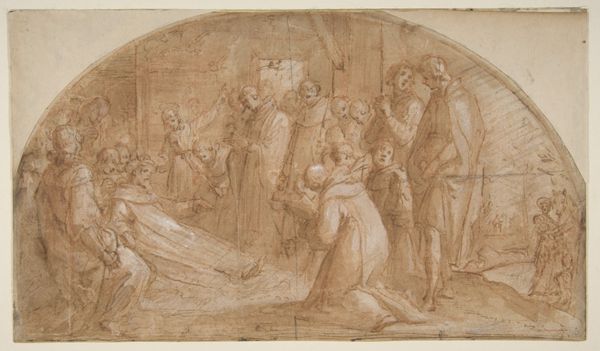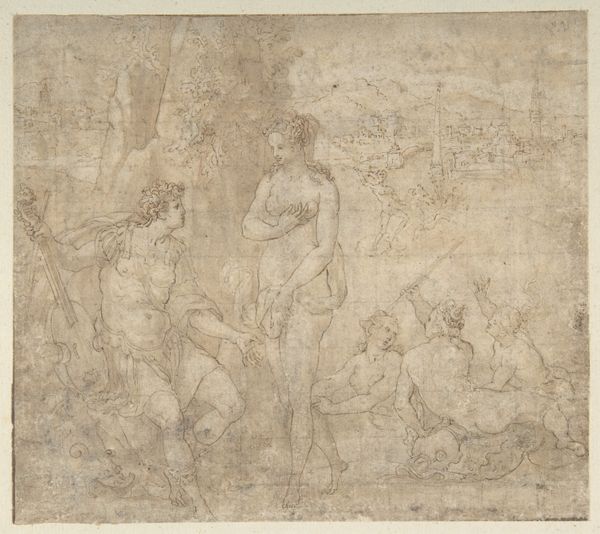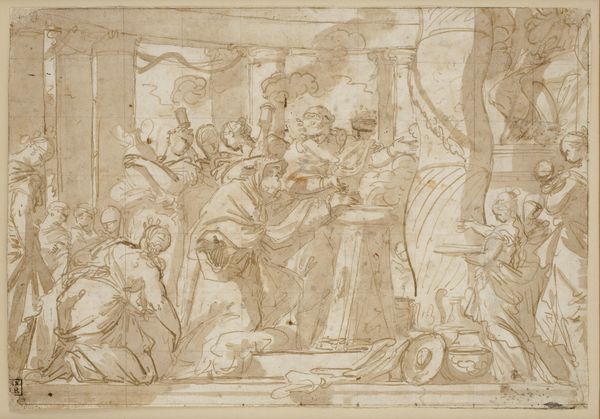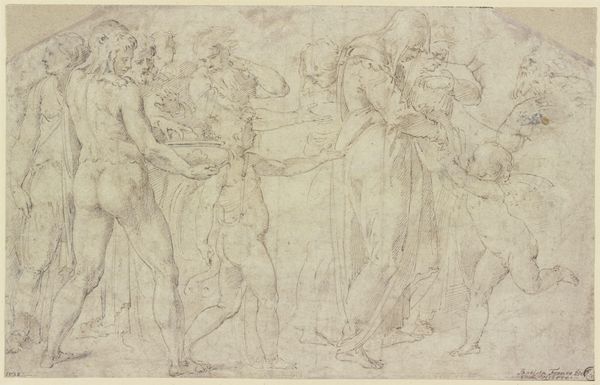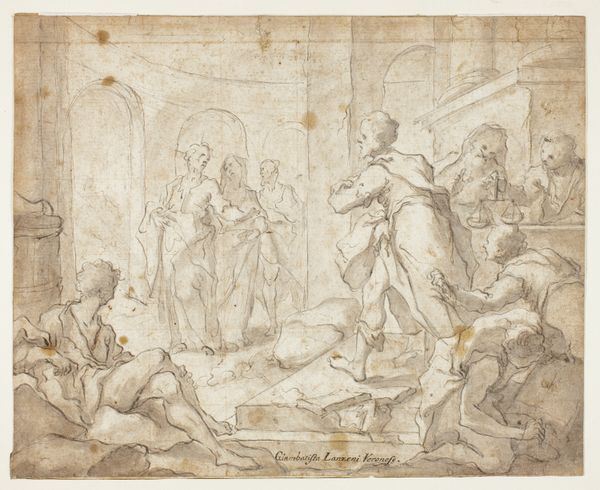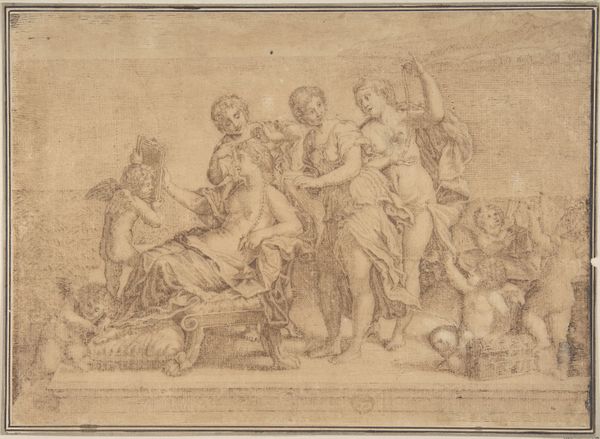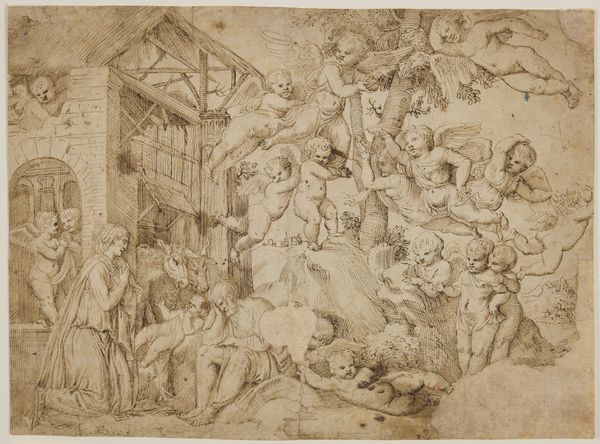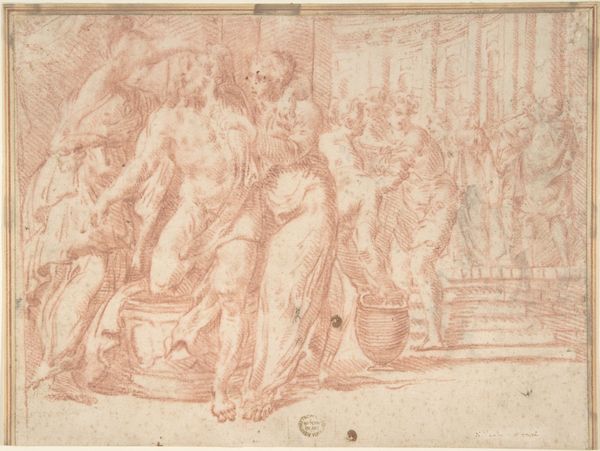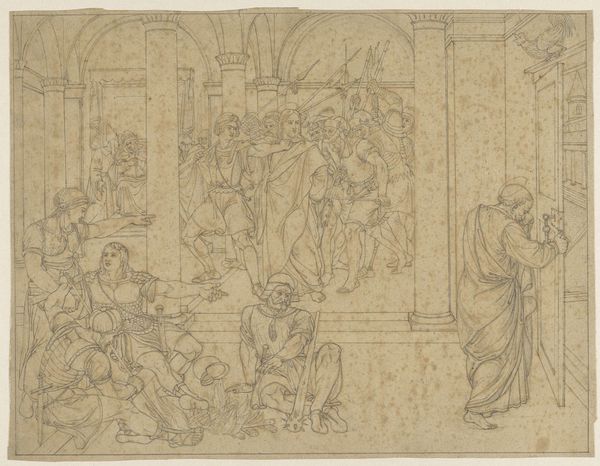
drawing, charcoal
#
portrait
#
drawing
#
charcoal drawing
#
figuration
#
11_renaissance
#
charcoal
#
history-painting
#
italian-renaissance
Dimensions: 265 mm (height) x 433 mm (width) (bladmaal)
Giovanni Battista Zelotti made this drawing, The Supper at Emmaus, in Italy, sometime in the mid-16th century. It depicts a scene from the Gospel of Luke, in which the resurrected Jesus shares a meal with two disciples. The visual codes and cultural references are rooted in the traditions of Renaissance art and theology. The setting, a classical building, evokes the grandeur of ancient Rome, which the Church had long sought to appropriate as a symbol of its own power and authority. The figures, rendered in detailed pen and ink, are idealized and expressive, conforming to the aesthetic values of the time. The very act of depicting a scene from the Gospels reflects the immense cultural authority the Church had in the 16th century, and the religious institutions that patronized the arts. To truly understand the drawing, one must look to sources such as religious texts and histories of the Church. The meaning of art is always contingent on social and institutional context.
Comments
No comments
Be the first to comment and join the conversation on the ultimate creative platform.
